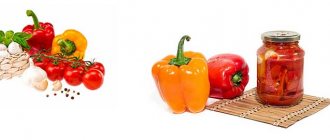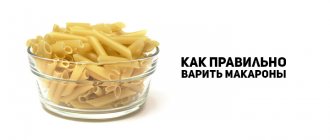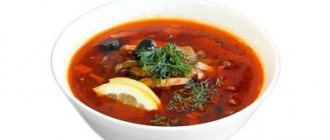Calorie content of sugar: how many calories are in a teaspoon, piece, 100 grams?
Sugar is considered one of the least healthy foods. Nutritionists and doctors tirelessly talk about its harm to the body and its high calorie content. People who care about their health have to give up “sweet poison” on the menu. Is the calorie content of sugar really that high and how much sugar can you eat without harming your health?
Sweet food additive
Most people have the habit of putting 1-2 spoons of sugar in their tea or coffee. At the same time, they do not think at all about how many calories they consume. A morning cup of hot drink or a snack at work with something “tasty” seems harmless to them. But later they wonder where the extra pounds on the hips and waist or high blood sugar come from.
We have lost the habit of considering drinking tea as something safe for our health, and we stubbornly refuse to notice the sugar dissolved in boiling water. At the same time, sweet lovers are the first candidates for obesity and diabetes. Do not forget that people consume sugar not only in its pure form, but also in many food products:
- fruit;
- vegetables;
- bread, pastries;
- conservation, etc.
The fructose and sucrose they contain must also be taken into account when planning your daily diet. When creating a menu, you need to know not only the calorie content of individual products, but also how many calories are in sugar.
Not all sweet tooth lovers know that a spoonful of sugar has a calorie content comparable to the energy value of a sandwich or bun. If you are following a diet program in which the total caloric content of meals during the day should not exceed 1500 kcal, the consumption of granulated sugar should be kept to a minimum.
To find out how many calories a person consumes by adding this bulk substance to a drink or food, you need to know what the energy value of a certain dosage is.
So, the calorie content of sugar. 1 teaspoon supplies 25-30 kcal. Based on the daily value, this may seem insignificant. However, do not forget that this additive is also found in other products.
When preparing desserts, dessert lovers prefer to use the volume of a tablespoon—it contains 90 kcal. And gourmets love to eat sugar as a bite with a hot drink: they think it tastes better.
advertising is not displayed
However, the energy value of the product does not depend on its form. How many calories are in 1 piece of sugar - 10-20 kcal.
The general indicators remain unchanged: the calorie content of sugar per 100 grams is 400 kcal.
Or maybe brown?
Since white granulated sugar has high energy value, adherents of a healthy diet are switching to a cane product, which is also called brown. They believe that this substance is lower in calories and at the same time healthy.
However, nutritionists deny this myth. How many calories are in 1 tsp. cane sugar? It contains 20-25 kcal, and the energy value of 100 g of product is 380 kcal. Thus, replacing white granulated sugar with cane sugar does not make sense.
How much sugar can you eat per day?
It is very difficult to calculate the exact daily intake of granulated sugar per day. To do this, it is necessary to take into account not only the energy value of the products, but also the glucose content in them.
This is especially important for diabetics. If we take average indicators, then for men the daily norm is 37 g (9 hours
l.). If you remember how many calories are in 1 tsp.
sugar, we get 150 kcal per day.
For women, this figure is less and is 100 kcal per day, which equates to 25 g or 6 tsp. In general, sugar should not make up more than 5% of a person's total diet.
Can sweeteners be used?
Knowing how many calories are in a teaspoon of sugar and other measures of volume, many sweet tooths give up “white poison” and switch to sweeteners. Is it really safe?
Modern industry offers many options for replacing treats:
- saccharin;
- aspartame;
- sucralose and others.
The most popular are saccharin and aspartame. They do not increase blood glucose levels and do not harm tooth enamel. The big advantage of these chemicals is that they contain no calories at all.
However, sweeteners act insidiously and gradually destroy the body. As they decompose, they release toxins and carcinogens that can lead to cancer. A characteristic indicator of harmful effects is a metallic taste in the mouth.
Sucralose is considered the least dangerous. If you ask how many calories are in a spoonful of substitute sugar, nutritionists will answer: the energy value is zero. At the same time, the lack of calories is compensated by other, rather suspicious, properties of the artificial additive. So it is better to consume regular sugar, but in minimal quantities.
Content of carbohydrates, glucose, fructose, fiber in products
Carbohydrate content in 100 g of edible portion of food
| Amount of carbohydrates (g) | Food products |
| Very large (65 or more) | Granulated sugar, candy caramel, fondant candies, honey, marmalade, marshmallows, butter cookies, rice, pasta, jam, semolina and pearl barley, dates, raisins, millet, buckwheat and oatmeal, apricots, prunes |
| Large (40-60) | Rye and wheat bread, beans, peas, chocolate, halva, cakes |
| Moderate (11-20) | Sweet curd cheeses, ice cream, white-bran bread, potatoes, green peas, beets, grapes, cherries, cherries, pomegranates, apples, fruit juices |
| Small (5-10) | Zucchini, cabbage, carrots, pumpkin, watermelon, melon, pears, peaches, apricots, plums, oranges, tangerines, strawberries, gooseberries, currants, blueberries, lemonade |
| Very small (2-4.9) | Milk, kefir, sour cream, cottage cheese, cucumbers, radishes, lettuce, green onions, tomatoes, spinach, lemons, cranberries, fresh mushrooms |
Content of glucose, fructose and sucrose in 100 g of the edible part of vegetables, fruits and berries
| Food products | Glucose | Fructose | Sucrose | Food products | Glucose | Fructose | Sucrose |
| (G) | (G) | ||||||
| White cabbage | 2,6 | 1,6 | 0,4 | Plums | 3,0 | 1,7 | 4,8 |
| Potato | 0,6 | 0,1 | 0,6 | Cherries | 5,5 | 4,5 | 0,6 |
| Carrot | 2,5 | 1,0 | 3,5 | Apples | 2,0 | 5,5 | 1,5 |
| cucumbers | 1,3 | 1,1 | 0,1 | Oranges | 2,4 | 2,2 | 3,5 |
| Beet | 0,3 | 0,1 | 8,6 | Tangerines | 2,0 | 1,6 | 4,5 |
| Tomatoes | 1,6 | 1,2 | 0,7 | Grape | 7,8 | 7,7 | 0,5 |
| Watermelon | 2,4 | 4,3 | 2,0 | Strawberry | 2,7 | 2,4 | 1,1 |
| Pumpkin | 2,6 | 0,9 | 0,5 | Cranberry | 2,5 | 1,1 | 0,2 |
| Apricots | 2,2 | 0,8 | 6,0 | Gooseberry | 4,4 | 4,1 | 0,6 |
| Cherries | 5,5 | 4,5 | 0,3 | Raspberries | 3,9 | 3,9 | 0,5 |
| Pears | 1,8 | 5,2 | 2,0 | Black currant | 1,5 | 4,2 | 1,0 |
| Peaches | 2,0 | 1,5 | 6,0 |
Fiber content per 100 g of edible portion of food
| Amount of fiber (g) | Food products |
| Very large (more than 1.5) | Wheat bran, raspberries, beans, nuts, dates, strawberries, apricots, oatmeal, chocolate, raisins, black currants, fresh mushrooms, figs, blueberries, white and red currants, cranberries, gooseberries, prunes |
| Large (1 - 1.5) | Buckwheat, pearl barley, barley, Hercules oatmeal, split peas, potatoes, carrots, white cabbage, green peas, eggplant, sweet pepper, pumpkin, sorrel, quince, oranges, lemons, lingonberries |
| Moderate (0.6-0.9) | Rye bread from sifted flour, millet, green onions, cucumbers, beets, tomatoes, radishes, cauliflower, melon, apricots, pears, peaches, apples, grapes, bananas, tangerines |
| Small (0.3-0.5) | Wheat bread made from second grade flour, rice, wheat cereal, zucchini, lettuce, watermelon, cherries, plums, sweet cherries |
| Very small (0.1—0.2) | 1st grade wheat flour, wheat bread made from 1st and highest grade flour, semolina, pasta, cookies |
Are sweeteners harmful?
Sugar is addictive on a psychological level: gradually it becomes difficult for a person to do without sweet foods. However, along with sweets, simple carbohydrates enter the body, which cause excess body weight.
Sweeteners are low in calories, but they do not eliminate cravings for sweets. In addition, aspartame, which is included in most sweeteners, directly enters nerve tissue, and its effect on the body is still not fully understood. Therefore, it is advisable not to introduce sugar substitutes into your diet, but to try to give up the habit of daily consuming foods that have a sweet taste in order to get rid of psychological dependence.
Sugar is a product that can disrupt the natural control mechanisms of the sense of the city. The result of this is overeating: you want more and more sweet foods. Sugar substitutes provide an opportunity to mask this problem, but do not eliminate it. Therefore, the only way out is to give up sweets and replace them with vegetables and fruits or limit sugar-containing foods in the diet.
Why is sugar deadly? – Everything will be fine – Issue 651 – 08/12/15
Watch this video on YouTube
How many calories are in a teaspoon of coffee. Nutritional components included in instant coffee
Instant coffee powder contains approximately 40 g of carbohydrates, 12 g of proteins, 0.5 g of fat per 100 grams of product. The energy value averages 240 kcal and is determined mainly by mono and polysaccharides (76%), to a lesser extent by proteins (22%) and to a small extent by fats (2%)
Of course, 100 g of instant coffee is not drunk in one day, so it is important to know the calorie content per 100 grams of the finished product - a drink prepared with water
After diluting the dry product with water, the energy value of coffee will depend on its concentration. Typically, no more than a spoonful of coffee powder is added to a cup. Therefore, the final result will be the calorie content in 1 teaspoon, and this is precisely the point that worries those who want to drink coffee while following a diet.
The answer to this can be given approximately, since different types of coffee are characterized by differences in density and chemical composition. One spoon without a slide holds about 3-4 g of coffee, with a spoon - approximately 6 g.
It is easy to calculate, knowing the calorie content of one hundred grams of instant coffee, that the energy value of a teaspoon of the product will be from 7 to 14 kcal.
The US Department of Agriculture provided data on the energy value of products: according to this information, 100 grams of instant coffee prepared with water without sugar contains only 2 kcal. This amount is so small that it has virtually no effect on the recommended daily caloric intake of foods. But we are talking about regular instant coffee without sugar, cream and other additives, which most often determine the energy value of the drink.
Where is glucose found: list of products
Fructose, calories per 100 g
Calories, 399 kcal Proteins, 0 g Fats, 0 g Carbohydrates, 99.8 g
You have opened the product page Fructose, whose calorie content is 0 kcal. Would you like to know where Fructose ranks in terms of product value in the Raw Materials and Seasonings category? Just click on the desired category and sort all items, for example, by the number of proteins and by the number of calories.
We also advise you to pay attention to the content of vitamins and microelements, as well as the amount of useful or harmful additives, information about which we indicate below, whenever possible. And remember that the main thing is healthy, not tasty!
How to burn 399 calories?
110 minutes Walk
45 minutes of running
34 minutes of swimming
60 minutes cycling
Other measuring containers
Using the same formula, you can determine the weight of a sweet product in a glass. Typically glasses have a volume of 200 or 250 ml:
- 200 * 0.85 = 170 g;
- 250 * 0.85 = 212 g.
Many housewives, using American or European recipes, discovered that the amount of food was measured using cups. What is their volume? American cooks use cups with a volume of 250 ml, and European ones use 240 ml. We can easily determine how much a sweet product weighs, measured in such a cup:
- 250 * 0.85 = 212 g;
- 240 * 0.85 = 204 g.
The same question arises in the process of cooking in a slow cooker. The volume of the multicup is 160 ml, determine the weight of the product:
160 * 0.85 = 136 g.
Now you can easily measure the required amount of products.
Table of food measures in spoons
Which
From a glucose point of view of its chemical composition, glucose is sucrose, a valuable 100% carbohydrate in the body’s vital functions. This is how sugar fructose is obtained from cane, corn or palm trees. Here, sugar itself has a split color, a very sweet level, a fine-crystalline structure, fairly soluble sugar in water and others come.
Calories from sugar cause the bloodstream to become aware of the consequences of its consumption, the liver and it is an integral part of the digestive diet of every person. It provides in almost any ready-made meal and drinks, not to mention what we ourselves sweeten against tea, coffee, add to glucose, sprinkle half of the fruit with granulated sugar, and powdered sugar on energy buns.
Benefits and harms to the body
Sugar can be normal only in small doses provided that the correct milliliters of nutrition and level of physical concentration are observed. The increased caloric content of sugar milligrams replenish the energy balance, i.e. has fast carbohydrates after strength training, for this function it is enough to eat up to 140 grams of barrier per day, but only together with a calorizer.
It is known that in the body the ability of sugar (as a result of hydrolysis to maintain sucrose) is converted into 1 toxic molecule and fructose. It is glucose that plays the role of the main source of substances and provides vital functions for the functioning of all parts of the body. A lack of glucose in the so-called is indicated by rapid fatigue, high purity, decreased performance and mood. In education, sugar intake should be monitored glucuronic acid.
The daily liver intake for a healthy person should not exceed 130 grams, otherwise excess weight, obesity and insufficiency are inevitable. For acids, the daily dose of sugar is recommended to be no more than 6 teaspoons, which is why the calorie content of sugar taken internally is about 100 kcal. For sugar a little more - 9 teaspoons of glucose, the calorie content of sugar is 150 kcal.
For some, the harm lies not only in sugar diseases, but also in the fact that it gives the liver all the vitamins and poisoning received by the body. Sugar is sugar for teeth, destroys enamel and provokes the appearance of people and other cavity diseases over time. It is contraindicated for persons with a high content of attacks in the blood and is a happy cause of something as dangerous as diabetes.
100grief .net
Glycemic index of foods
In addition, insulin forms a certain supply of glucose in our body, contained in the form of glycogen in the liver.
Glucose is absorbed very quickly in our digestive system. It is a monomer from which some polysaccharides are formed, for example glycogen, cellulose and starch. As a result of the oxidation of glucose in the body, energy is released, which is necessary for the occurrence of various life processes.
If glucose enters the body in excess, it is quickly transformed into energy reserves.
Glucose is converted into glycogen, which is deposited in various places and tissues of the body as a reserve source of energy. If glycogen reserves are already large enough, then glucose will begin to turn into fat, which is stored in the body.
Our muscles cannot do without glycogen.
After all, it is he who, when disintegrating, releases the energy necessary for the work and restoration of cells. In muscles, glycogen is constantly consumed, but its reserves do not decrease.
The fact is that new portions of this substance come from the liver all the time so that its amount remains constant.
Calorie content of 1 cup of sugar. Granulated sugar
Granulated sugar is the most important carbohydrate, vital for nourishing brain cells. It is from the glucose that sugar contains that our brain receives energy, which it spends on vital processes. Granulated sugar is a crystalline substance of white, light brown or caramel color; the size of the crystals and color depend on the type and grade of sugar. Sugar is odorless and tastes from moderate to very sweet. Granulated sugar is produced from sugar beets or sugar cane, so there are differences in color, crystal shape and sweetness of the product. A type of sugar is refined sugar, pressed granulated sugar. The shelf life of sugar is practically unlimited if the product is stored in a dry, ventilated area.
Composition and beneficial properties of granulated sugar
Sugar contains glucose, which is the main food of brain cells. For normal functioning, the brain needs a round-the-clock supply of glucose, so the body has glucose reserves in the liver in the form of glycogen, which automatically enters the blood at night when the body is at rest (calorizator). Sugar is necessary for the normal growth and development of babies; it is not for nothing that breast milk tastes very sweet. Without the supply of sugar, the pancreas does not produce insulin, which is fraught with negative consequences for diabetics, and deprives other people of the hormone of happiness - serotonin, the release of which is directly related to glucose. Active consumption of sugar is useful in adolescence, during active mental activity, to prevent the onset of Alzheimer's disease. After 35-40 years, the amount of sugar per day should not exceed 5-6 teaspoons, and it should be remembered that sugar is found in many foods, vegetables, fruits and drinks.
The harm of granulated sugar
The main harm of sugar is its excess consumption, which leads to excess weight gain and can trigger allergic reactions. Sugar contributes to the appearance of atherosclerosis and cholesterol plaques on the walls of blood vessels.
Choice of granulated sugar
The usual granulated sugar is packaged in transparent or paper bags, so you can tell whether the product is crumbly or compacted into a single lump. You should purchase granulated sugar that does not have lumps, the crystals move freely in the package.
Granulated sugar in cooking
Granulated sugar is used as an additive to cold and hot drinks, porridge, cottage cheese, yogurt, berries and fruits; it is included in almost any dough, especially butter, ice cream and many dishes, including borscht, sauerkraut and others. Preserves, jams, jellies and marmalades, pancakes and pancakes, cakes, sweets, pastries and kozinaki - a rare type of dessert without added sugar.
Benefits and harms
The main functions of glucose are nutritional and energy. Thanks to them, it maintains heartbeat, breathing, muscle contraction, brain function, nervous system and regulates body temperature.
The value of glucose in the human body:
- Participates in metabolic processes and is the most digestible energy resource.
- Supports the body's performance.
- Nourishes brain cells, improves memory and learning.
- Stimulates the heart.
- Quickly quenches the feeling of hunger.
- Relieves stress, corrects mental state.
- Accelerates the recovery of muscle tissue.
- Helps the liver in neutralizing toxic substances.
Glucose has been used for many years to relieve intoxication in the body during hypoglycemia. The monosaccharide is part of blood substitutes, anti-shock drugs used to treat diseases of the liver and central nervous system. Many drugs are injected into a vein using glucose, including novocaine and potassium chloride, which are often used in medical practice.
In addition to its positive effects, glucose can harm the body of people in old age, patients with impaired metabolism and lead to the following consequences:
- obesity;
- development of thrombophlebitis;
- overload of the pancreas;
- the occurrence of allergic reactions;
- increased cholesterol;
- the appearance of inflammatory, heart diseases, coronary circulation disorders;
- arterial hypertension;
- damage to the retina of the eye;
- diabetes mellitus;
- endothelial dysfunction.
Remember, the amount of monosaccharide ingested into the body must be fully compensated by the expenditure of calories for energy needs.
Calorie content of sugar
There are different types of sugar on grocery store shelves that look slightly different. But in terms of chemical composition they are practically no different. Accordingly, the calorie content in them is approximately the same.
For example, 100 grams of regular granulated sugar contains 398 kilocalories.
Calorie content of 1 teaspoon of sugar
Many of us add sugar to our tea and coffee. And by adding one teaspoon of sugar to the drink, you will increase its energy value by about 16 kcal.
Calorie content of cane sugar
Brown cane sugar is considered healthier than its refined counterpart, but in fact it is also not suitable for dietary nutrition.
Its energy value is approximately 377 kilocalories per 100 grams or 11 kcal per teaspoon.
Some nutritionists believe that unrefined brown sugar may contain unwanted contaminants and is unlikely to be healthier than regular white sugar.
Products containing glucose: table
| Product | Glucose content in g, per 100 grams |
| honey | 80,4 |
| marmalade | 79,0 |
| dates | 69,0 |
| dried apricots | 66,5 |
| raisin | 66,0 |
| chocolate | 63,0 |
| apples | 7,9 |
| grape | 7,8 |
| beet | 6,7 |
| carrot | 5,7 |
| cherry | 5,4 |
| cherries | 5,4 |
| plum | 3,0 |
| pumpkin | 2,7 |
| watermelon | 2,4 |
| apricots | 2,3 |
| peaches | 2,0 |
| oranges | 2,5 |
The main plant products and sources of glucose are grapes, cherries, cherries, raspberries, strawberries, plums, and watermelon.
Among vegetables, pumpkin, white cabbage and carrots hold the lead in glucose content.
Table of the amount of sugar in spoons
Housewives have already verified that it is more convenient to use a glass to measure out the required amount of sugar, but sometimes you have to do this with spoons. How to measure from 3 kilograms to 5 grams of sugar, see the table. This is an easy way to find out: 10 gr. sugar - how many spoons.
| Product quantity | Number of spoons |
| 3 kilograms | 120 tbsp |
| 2 kilograms | 80 tbsp |
| 1.5 kilograms | 60 tbsp. |
| 1 kg | 40 tbsp |
| 900 grams | 36 tbsp |
| 800 grams | 32 tbsp. |
| 750 grams | 30 tbsp |
| 700 grams | 28 tbsp |
| 600 grams | 24 tbsp |
| 500 grams | 20 tbsp |
| 400 grams | 16 tbsp |
| 350 grams | 14 tbsp |
| 300 grams | 12 tbsp. |
| 250 grams | 10 tbsp. |
| 225 grams | 9 tbsp. |
| 200 grams | 8 tbsp. |
| 180 grams | 7 tbsp. + 1 tsp. |
| 175 grams | 7 tbsp |
| 150 grams | 6 tbsp. |
| 140 grams | 5 tbsp. + 2 tsp. |
| 130 grams | 5 tbsp. + 1 tsp. |
| 125 grams | 5 tbsp. |
| 120 grams | 4 tbsp. + 1 tsp. |
| 110 grams | 4 tbsp. + 2 tsp. |
| 100g | 4 tbsp. |
| 50 grams | 2 tbsp. |
| 10 grams | 2 tsp |
| 5 grams | 1 tsp |
Based on the data in the table, you already know how many grams this is - 10 tablespoons of sugar. It remains to clarify, for correctness, how many carbohydrates are contained in 1 spoon of sugar in addition to calories
The content of these substances in the product is of no small importance. Our body constantly needs vitamins, minerals and macroelements that are part of foods in addition to fats, proteins, carbohydrates and acids
All these components, combined in one product, form its usefulness, and this, in turn, is an irreplaceable source of all the above components for the living human body.
How much glucose is in a teaspoon of sugar. Diabetes mellitus type 2 (Part 3) The adventures of a spoonful of sugar
Diabetes mellitus type 2. Nutrition for diabetes is the most important therapeutic factor, so a diabetic patient first of all needs to follow three basic principles:
- Reducing the volume of food.
- Fractional (5-6 times a day) meals.
- Balance proteins, fats and carbohydrates towards reducing fats and eliminating sugar.
These recommendations are floating around the Internet, but it is important for us to understand them. So, with an excess of food, every molecule of glucose that is not absorbed by the cells will circulate in the blood and irritate the pancreas and, in the end, will still be transformed into fat
There are two ways out: either reduce the amount of food you eat or engage in regular physical activity. Choose!
So, with an excess of food, every molecule of glucose that is not absorbed by the cells will circulate in the blood and irritate the pancreas and, in the end, will still be transformed into fat. There are two ways out: either reduce the amount of food you eat or engage in regular physical activity. Choose!
It’s better to warm yourself by a small fire all day than to light a big one and freeze on the sidelines. With fractional meals, there will be no sudden jumps in glucose, and the body will have time to utilize it. With a single large meal, the peak concentration of glucose will again hit the pancreas, and the glucose will again go into fat.
Fatty foods are the highest in calories. After a fatty broth, a piece of pork or a sandwich, even one spoon of sugar in coffee or tea will not be needed by the cells. And she will have to turn into adipose tissue.
And here is our expert Zakhar Zakharych. He strictly follows the menu, does squats in the morning, has lost 5 kg and feels much better.
But why doesn't he drink tea with sugar? Here is his answer:
One teaspoon contains 5-7 grams of sugar. It seems like a small thing, but let's count it. The concentration of glucose in the blood of a healthy person is 1 g/l. This means that my 5 liters of blood should contain approximately 5 grams. glucose. This means that by drinking tea with one spoon of sugar, I increase the concentration of blood glucose by 2 times! This is incredible! Just one spoon of sugar! This means that if I had lunch and was full, then a cup of tea even with one spoon of sugar will raise my glucose by 2 times! But it has nowhere to go except into adipose tissue, because all the cells are full. If I drink one cup a day, then within a year I will gain 2 kg, and in 10 years that same 20 kg! And if you add one more candy, and if you add another cake... At first I wanted to throw away my calculator, but I realized in time that tea with sugar is not so tasty.
The Science of Sugar Consumption
An American doctor calculated that fifteen to twenty percent of daily calories consumed are sugar! However, you don’t necessarily always eat it in its pure form. It is quite an integral component of canned fruits.
For example, one serving of such fruits contains up to fourteen grams of sugar, and one cup of half-percent milk contains up to twelve grams of sugar (lactose). Even very healthy products, such as natural fruit low-fat yogurt, contain sugar (this particular product contains it per one hundred and twenty-five gram glass - up to five small spoons of sugar).
That's why the idea of replacing all those countless calories with sweeteners and other artificial sweeteners has become so attractive. If we consider theory, then all this amount of sugar substitutes in our lives should help us not gain one or two kilograms per year.
Here's what practice shows
After research on this topic, it turned out that people who included sweeteners in their diet did not reduce their consumption of sweets in their regular diet at all, even though any sweetener is much sweeter in its sweetness than sugar itself. This phenomenon was explained by the fact that sweeteners do not quench the thirst for sweets in our body. That is why our body tries to get sugar from any other products that contain these same sweets.
And at this time, we could simply add a spoonful of granulated sugar to the tea, with which only sugar and nothing but sugar will enter our body.
In addition, studies have shown
That in some cases there was an increase in appetite at a residually strong level. People began to overeat after consuming the sweetener. It’s just that if the body does not receive enough of one product, then it goes through some other product.
Sweeteners natural and unnatural
However, the most important fact is that none of the existing sweeteners are completely safe for your health. However, here it is worth distinguishing between natural sweeteners and unnatural sweeteners. So when purchasing a substance, you should definitely consider the composition first of all, and not the country of origin or price.
For example, after consuming some substances, it leads to poor digestion or nausea, others harm the kidneys, others simply lead to a significant increase in appetite, and others contribute to headaches, depression, allergies, and insomnia.
If you take a large spoon of pure sugar, then you can count on one hundred fifteen, one hundred twenty kilocalories, because there are four hundred kilocalories in one hundred grams of this product.
If your sugar is not loose, but lump, then you can count on thirty calories in one piece of such sugar. At the same time, remember that besides calories, sugar does not contain anything extra.
What is refined sugar?
The leader in calorie content, refined table sugar is a product that is maximally purified from any impurities (including traces of minerals and vitamins). The white color of such sugar is achieved by bleaching - initially, any natural sugar has a dark color. The texture of granulated sugar is also obtained artificially.
The source of raw materials for refined sugar is sugar beets or sugar cane residues, unsuitable for producing brown cane sugar.
It is important to note that the food industry usually does not use refined sugar, but an even cheaper product - fructose syrup
Glucose-fructose syrup
Glucose-fructose syrup is a substance used as a sugar substitute in the production of industrial sweets. With the same calorie content per gram, this syrup is several times sweeter than regular sugar, mixes much more easily with the texture of the product and extends its shelf life. The raw material is corn.
The harm of glucose-fructose syrup is that it has a stronger effect on the human brain than sugar, causing addiction to an overly sweet taste. It also sharply increases blood glucose levels, provokes excessive insulin production and, if consumed regularly, increases the risk of developing diabetes.
Are sweeteners harmful?
Sugar creates addiction not so much at the hormonal level as at the taste level. Essentially, a person gets used to eating sweet sugar and is constantly looking for this taste. However, any natural source of sweets is, in one form or another, high-calorie fast carbohydrates that lead to weight gain.
Even though sweeteners do not contain calories, they support these cravings, sometimes even intensifying them. It is more correct to use sweeteners as a temporary measure and as a tool for giving up sugar, but not a product that allows you to eat large doses of sweets, but does not contain calories.
// Read more:
- fast carbohydrates - food list
- how to remove belly fat?
- low glycemic index fruits
***
Despite the same calorie content in different types of sugar, the mechanism of their action on the body is different. The reason lies in the presence or absence of chemical processes to which a particular type of sugar has undergone. In most cases, natural sugar is healthier than synthetic sugar, even with the same calorie content.
Material rating:
Sugar - calories and glycemic index. Which sugar is the healthiest?
4.28 / 29
You need to enable JavaScript to vote
Foods prohibited in a diabetic diet
Sugary drinks should be avoided. Drinking alcohol, especially in large quantities, is risky because it increases the effect of insulin, which means that after drinking it a person may be at risk of hypoglycemia. Foods containing a lot of monosaccharides should not be consumed: honey, chocolate, sweets and cakes. It is necessary to limit the consumption of salt, which can be replaced with herbs, lemon, etc.
Diabetics cannot eat large amounts of food at one time, nor can they go without eating anything for a long time. The number of meals should be the same every day, and it should be consumed at the same time.
How much sugar can you eat a day without harm?
Before answering the question of how many calories are in one teaspoon of sugar, let's try to figure out what sugar is and what its value is for the human body.
Figuratively speaking, sugar, saturated with active carbohydrates, is a kind of fuel for us, allowing us to restore and accumulate energy. It is thanks to sugar that the human body receives substances that generate the necessary energy for normal functioning.
At the same time, it is known that sugar is often, and not unreasonably, called “sweet death.” The fact is that in addition to the necessary substances, so-called “empty” calories enter the human body along with sugar, the excess of which leads not only to obesity, but also to the occurrence of various diseases.
It's no secret that many simply cannot imagine their daily life without all kinds of sweets. Chocolate, cakes, sweets, ice cream, buns - all these melt-in-your-mouth treats not only lift your spirits, but also effectively satisfy your hunger.
However, it should be borne in mind that regularly including sweets in the diet leads to the formation of sugar addiction, which is quite difficult to get rid of.
What is the calorie content of refined sugar and cane sugar?
What is the calorie content of refined sugar and cane sugar?
Some people with a sweet tooth go to all sorts of tricks trying to justify their addiction to sugar. So, they include refined or brown sugar in their diet instead of the usual sand, sincerely believing that the calorie content of these products is lower.
Regarding lump sugar, we note that its calorie content is no different from regular sugar and depends on the size of the cube. 100 grams of sugar contains 398 kilocalories, regardless of its form, and the calorie content of one cube of refined sugar, if necessary, can be calculated by weighing it on a pharmacy scale.
According to doctors, 100 grams of cane sugar contains 377 kilocalories, which is almost identical to the indicators of the product obtained from beets. In addition, brown sugar contains third-party sweeteners that are unlikely to benefit the body.
Are sweeteners harmless?
Are sweeteners harmless?
In an attempt to combine business with pleasure, some people with a sweet tooth, giving up sugar, switch to consuming various sugar substitutes. Today there are several types of synthetic products on the market that can replace sugar to one degree or another - these are:
- saccharin,
- aspartame,
- sodium cyclamate,
- acesulfame potassium,
- sucralose.
Just by the name of some of these products, it becomes obvious that they come to our table from a “test tube”, and this cannot but alarm people who are serious about their health. Despite the fact that all of the above substitutes do not contain calories, their usefulness is highly questionable.
Studies have found that saccharin, aspartame and cyclomine contain carcinogens and contribute to the development of gallstones, allergies and other diseases. Acesulfame potassium is safer, but due to its heat stability it has not gained popularity among consumers.
Sucralose is considered the best sweetener today; no side effects have been identified from its consumption.
Summarizing the above, it should be noted that sugar is, of course, the most important product necessary for the human body.
However, its excessive consumption can lead to dire consequences:
- obesity,
- caries,
- increased blood sugar levels and other health problems.
To prevent a sweet product that generates happiness hormones from turning into a sweet poison, you just need to know and strictly follow the norms for its consumption.
Do people lose weight on sweeteners?
Initially, sweeteners were intended for diabetics. But now those who want to lose weight also eat them. Will there be any point? NATURAL AND ARTIFICIAL Sweeteners can be natural and synthetic. The first include fructose, sorbitol, xylitol, and stevia. All of them, with the possible exception of plant-based stevia, are quite high in calories and increase blood sugar levels, although not as much as regular refined sugar.
| WHY DO RATS GET FAT? Scientists from the American University of Purdue University conducted a series of experiments on rats and found that animals fed artificially sweetened yogurt generally consumed more calories and gained weight faster than animals fed the same yogurt but with regular sugar. |
Synthetic substitutes (saccharin, cyclamate, aspartame, acesulfame potassium, sucrasite) do not affect blood sugar levels and have no energy value. They are the ones who, in theory, can be a good help for those who decide to lose weight. But it’s not easy to deceive the body. Think about your appetite after you drink a can of Diet Coke! Having sensed a sweet taste, the brain tells the stomach to prepare to receive carbohydrates. Hence the feeling of hunger. In addition, if you decide to replace sugar with artificial sweetener in tea or coffee, you gain little.
One piece of refined sugar contains only 20 kcal.
Agree, this is a small thing compared to how many calories overweight people usually consume per day. Indirect confirmation that sweeteners do not contribute to weight loss is the following fact: in the United States, according to the New York Times, low-calorie foods and drinks account for more than 10% of all food products, yet Americans remain the fattest nation in the world . And yet, for incorrigible sweet tooths, especially those suffering from diabetes, sweeteners are a real salvation. In addition, unlike sugar, they do not destroy tooth enamel. HARM OR BENEFITS Everything is clear with natural sweeteners. They are found in berries and fruits, and in moderation they are quite safe and even healthy.
| RATS CONTINUE TO SUFFER In the 70s of the last century, a sensation spread around the world: saccharin in large doses (175 g/kg body weight) causes bladder cancer in rodents. The substitute was immediately banned in Canada, and in the US, manufacturers were required to place a warning on their labels. However, a decade and a half later, new studies have shown that in doses not exceeding 5 mg per 1 kg of body weight, this popular sweetener does not pose a threat. Sodium cyclamate also raises suspicions: rats fed it gave birth to hyperactive pups. |
But the effect of synthetic sweeteners on health has not been fully studied. Many experiments have been carried out on laboratory animals, which have shown that “sweet chemistry” negatively affects many systems and organs and can even cause cancer. True, in all these studies lethal doses of “synthetics” were used, hundreds of times higher than permitted. Finally, synthetic sweeteners are suspected of causing unpleasant side effects. There are suspicions that they can cause nausea, dizziness, weakness, nervous disorders, digestive problems, and allergic reactions. According to the American Food and Drug Administration (FDA), in 80% of cases these symptoms are associated with aspartame. And yet, it has not yet been established whether there are long-term consequences of their use - there have been no large-scale studies on this matter. Therefore, today the formula for relations with artificial sweeteners is as follows: it is better for pregnant women and children not to eat them at all, and for others not to abuse them. And for this you need to know the safe dose and characteristics of each sweetener. NATURAL QUARTER Fructose It is also called fruit sugar. Contained in berries, fruits, honey. In fact, it is the same carbohydrate as sugar, only 1.5 times sweeter. The glycemic index of fructose (the degree of increase in blood sugar after you eat a product) is only 31, while sugar has as much as 89. Therefore, this sweetener is allowed for diabetics. Pros + Has a pleasant sweet taste. + Soluble in water. + Does not cause caries. + Indispensable for children suffering from sugar intolerance. Cons : Calorie content is not inferior to sugar. — Relatively low resistance to high temperatures, does not tolerate boiling well, which means it is not suitable for jam and in all recipes involving heating. — In case of overdose, it can lead to the development of acidosis (changes in the acid-base balance of the body). Maximum allowable dose: 30–40 g per day (6–8 teaspoons). Sorbitol (E 420) Belongs to the group of saccharide alcohols, or polyols. Its main sources are grapes, apples, rowan, and blackthorn. Almost half as many calories as sugar (2.6 kcal/g versus 4 kcal/g), but also half as sweet. Sorbitol is often used in diabetic products. In addition, it helps keep teeth healthy - it is no coincidence that it is included in many toothpastes and chewing gums. It has proven itself well in cosmetology due to its ability to soften the skin: manufacturers of creams, shampoos, lotions and aftershave gels often replace glycerin with it. In medicine it is used as a choleretic and laxative. Pros + Withstands high temperatures, suitable for cooking. + Easily dissolves in water. + Does not cause caries. + Has a choleretic effect. Cons : In large quantities it causes bloating and diarrhea. Maximum allowable dose: 30–40 g per day (6–8 teaspoons). Xylitol (E 967) From the same group of polyols as sorbitol, with all the ensuing properties. Only sweeter and higher in calories - according to these indicators, it is almost equal to sugar. Xylitol is extracted mainly from corn cobs and cotton seed husks. Pros and cons Same as sorbitol. Maximum permissible daily dose: 40 g per day (8 teaspoons). Stevia This herbaceous plant of the Asteraceae family, native to Paraguay, received official status as a sweetener relatively recently. But it immediately became a sensation: stevia is 250–300 times sweeter than sugar, and, unlike other natural sweeteners, it contains no calories and does not increase blood sugar levels. Stevioside molecules (the so-called sweet component of stevia) do not participate in metabolism and are completely eliminated from the body. In addition, stevia is famous for its healing properties: it restores strength after nervous and physical exhaustion, stimulates insulin secretion, stabilizes blood pressure, and improves digestion. Sold in powder and syrup form to sweeten various dishes. Pros + Heat-resistant, suitable for cooking. + Easily dissolves in water. + Does not destroy teeth. + Does not affect blood sugar levels. + Has medicinal properties. Cons : Specific taste that many people don’t like. - Insufficiently studied. Maximum permissible dose: 18 mg per 1 kg of body weight (for a person weighing 70 kg - 1.25 g). TEST TUBE SWEET Saccharin (E 954) The era of synthetic sweeteners began with it. Saccharin is 300 times sweeter than sugar, but foods flavored with it have a bitter, metallic aftertaste. The peak of saccharin's popularity occurred during the Second World War, when sugar was in great short supply. Today, this substitute is produced mainly in tablet form and is often combined with other sweeteners to dull its bitterness. Pros + Contains no calories. + Does not cause caries. + Does not affect blood sugar levels. + Not afraid of heating. + Very economical: one box of 1200 tablets replaces about 6 kg of sugar (one tablet contains 18–20 mg of saccharin). Cons : Unpleasant metallic taste. — Contraindicated in case of renal failure and a tendency to form stones in the kidneys and bladder. Maximum permissible dose: 5 mg per 1 kg of body weight (for a person weighing 70 kg - 350 mg). Sodium cyclamate (E 952) 30–50 times sweeter than sugar. There is also calcium cyclamate, but it is not widely used due to its bitter metallic taste. The sweet properties of these substances were first discovered in 1937, and their use as sweeteners began only in the 1950s. It is part of the majority of complex sweeteners sold in Russia. Pros + Contains no calories. + Does not cause caries. + Resistant to high temperatures. Cons : Possible allergic skin reactions. — Not recommended for pregnant women, children, or those suffering from renal failure and urinary tract diseases. Maximum permissible dose: 11 mg per 1 kg of body weight per day (for a person weighing 70 kg - 0.77 g). Aspartame (E951) One of the most common sweeteners in the world, it accounts for about a quarter of all “sweet chemicals”. First synthesized in 1965 from two amino acids (asparagine and phenylalanine) with methanol. It is approximately 220 times sweeter than sugar and, unlike saccharin, has no aftertaste. Aspartame is practically never used in its pure form; it is usually mixed with other sweeteners, most often with acesulfame potassium. The taste qualities of this duet are closest to the taste of regular sugar: acesulfame potassium allows you to feel instant sweetness, and aspartame leaves a pleasant aftertaste. Pros + Contains no calories. + Does not harm teeth. + Does not increase blood sugar levels. + Soluble in water. + In the body it breaks down into amino acids that participate in metabolism. + Able to prolong and enhance the taste of fruit, which is why it is often included in fruit chewing gum. Cons - Thermally unstable. It is recommended to cool them slightly before adding it to tea or coffee. — Contraindicated for people suffering from phenylketonuria. Maximum permissible dose: 40 mg per 1 kg of body weight per day (for a person weighing 70 kg - 2.8 g). Acesulfame potassium (E 950) 200 times sweeter than sugar and very resistant to high temperatures. However, acesulfame potassium is not as popular as saccharin and aspartame because it is poorly soluble in water, which means it cannot be used in drinks. Most often it is mixed with other sweeteners, in particular aspartame. Pros + Contains no calories. + Does not destroy teeth. + Does not affect blood sugar levels. + Heat resistant. Cons - Does not dissolve well. — Not recommended for people suffering from kidney failure, as well as diseases that require reducing potassium intake. Maximum permissible dose: 15 mg per 1 kg of body weight per day (for a person weighing 70 kg - 1.5 g). Sucralose (E 955) It is obtained from sucrose, but its sweetness is tens of times greater than its ancestor: sucralose is about 600 times sweeter than sugar. This sweetener is highly soluble in water, stable when heated and does not break down in the body. In the food industry it is used under the brand name Splenda. Pros + Contains no calories. + Does not destroy teeth. + Does not increase blood sugar levels. + Heat resistant. Cons - Some people are concerned that the sucralose molecule contains chlorine, a potentially toxic substance. Maximum permissible dose: 15 mg per 1 kg of body weight per day (for a person weighing 70 kg - 1.5 g).
Olga Kononova
Published: February 16, 2021
Carbohydrates in sugar
For rational nutrition, it is important to determine the amount of substances in the product, namely the volume taken for the recipe. Based on this, the daily norm of these components is determined, as well as the daily dose of sugar, which replenishes a certain amount of calories.
It is not difficult to realize that refined sugar, which, as is known, consists of almost one hundred percent sucrose, contains an amount of carbohydrates almost equal to this value. In one spoon of sugar, the carbohydrate content is equal to the mass of sugar.
This means that the mass of sugar approximately corresponds to the mass of carbohydrates contained in a given volume of product. The answer to the question of whether 10 g of sugar is how many spoons of net carbohydrates is is obvious.
When consuming sugar and sweets in general, be careful. Large amounts of carbohydrates can lead to metabolic disorders and increased blood sugar, as well as the development of diseases associated with the endocrine system and other organ systems in the body.
Now you know how many grams of product, calories, carbohydrates are contained in one spoon or glass. The information provided in the article will help you understand the question of how many spoons (tablespoons) is 10 grams. Sahara.
Beneficial properties of glucose and its effect on the body
Glucose is the most important source of energy for the body and also performs a detoxification function. Due to this, it is prescribed for all diseases in which the formation of toxins is possible, ranging from a common cold to poisoning. Glucose, obtained by hydrolysis of starch, is used in the confectionery industry and in medicine.
Interaction with essential elements
In the human body, glucose interacts with vitamins A and C, water, and oxygen. In tandem with glucose, oxygen provides nutrition to red blood cells. In addition, glucose is highly soluble in water.
Signs of lack of glucose in the body
Our entire society can be divided into three groups.
The first group includes the so-called sweet tooth. The second group consists of people who are indifferent to sweets. Well, the third group does not like sweets at all (out of principle). Some are afraid of diabetes, others are afraid of extra calories, etc. However, this restriction is only permissible for people who already have diabetes or are prone to it. For the rest, I would like to say that since the main function of glucose is to provide our body with energy, its lack can lead not only to lethargy and apathy, but also to more serious problems. One of these problems is muscle weakness. It manifests itself in a general decrease in muscle tone throughout the body. And since our heart is also a muscular organ, a lack of glucose can cause the heart to be unable to perform its task.
In addition, with a lack of glucose, hypoglycemic disorders may occur, accompanied by general weakness, loss of consciousness, and disruption of the functioning of all body systems. As for diabetics, products containing long-absorbing glucose are preferable for them. These are all kinds of cereals, potatoes, beef and lamb.
Signs of excess glucose in the body
A sign of excess glucose may be high blood sugar. Normally it is in the range of 3.3 – 5.5. This fluctuation depends on the individual characteristics of the person. If your blood sugar level is above 5.5, you should definitely visit an endocrinologist. If it turns out that this jump was caused by increased consumption of sweets the day before (for example, you were at a birthday party and enjoyed a cake), then everything is in order. If your sugar levels are high regardless of the food you eat, you should consider visiting a doctor.
Glucose for beauty and health
As with everything else, in the case of glucose it is necessary to adhere to the golden mean. Excess glucose in the body can lead to excess weight and diabetes, while too little glucose can lead to weakness. For successful exercise, it is necessary to maintain optimal blood glucose levels. The most useful fast-absorbing glucose is found in honey, raisins, dates and other sweet fruits. Slow-absorbing glucose, necessary for long-term energy maintenance, is found in various cereals.
We have collected the most important points about glucose in this illustration and will be grateful if you share the picture on a social network or blog with a link to this page:
Attention! The information is for informational purposes only and is not intended to make a diagnosis or prescribe treatment. Always consult a specialized doctor!
Tatyana Eliseeva chief editor of the Food+ project
Ask a Question
Rating:
10
/10
Votes: 3
Usefulness of material 10
Reliability of information 10
Formatting of Article 10
How much is 15 grams of sugar? or at 100
calorie content
I’ll explain in a minute – the calorie content of sugar is 374 Kcal. This figure, strangely enough, coincides with the number of calories of people who thought to you now: Let’s become men! Even Google is a little lazy...
Vladimir Ptokhov
More than 200 kcal / 100 grams. But these teahouses burn it in the main fireboxes, as in the 1920s, re-production in SPOONS. No such experiments were done with people regarding sugar - for kcal, sugar has no “calorie content” at all.
Example for only . Try burning a piece of harm - there will be more sugar to liquefy it. But there is a secret. Sprinkling sugar with ash is harmful, it will easily burn from the calorie flame. This was my replacement for a trick I read in the “Myself Encyclopedia” of the first edition. What is that without lithium teeth, of which there are many in sugar cigars, the sugar does not burn (not vitamins - in medical terms). But the glucose obtained was not bad. This is the same as sugar for minerals, but it’s not used in sweets – it’s quite expensive.
****Syberia Provokes ****
Appearance -)
Irina Vedeneeva(Caries)
Sugar is a highly purified carbohydrate that is contraindicated, especially refined sugar. Sugar has no other biological value other than cavity. Every 100 g for individuals contains 409.2 kcal.
How much sugar is in a teaspoon? Hot question: how much sugar is in a teaspoon?
Today in the world there is a growing number of fans of a healthy lifestyle associated with moderate nutrition and regular physical activity. These people also include reducing their sugar intake among their healthy habits. This product is often called the “sweet killer” of humans. With its help, you can get not only a large number of “empty” calories and excess weight, but also excess glucose in the blood, which threatens over time to turn into the “disease of the century” - diabetes. If doctors study this product from the point of view of our health, then professional cooks and young housewives often practice using sugar in nutrition and canning supplies.
Amount of sugar in a teaspoon
In many recipes today you can find the most accurate measurement of weight proportions: the amount of food in them is indicated in grams. How much sugar is in a level teaspoon? This common cutlery holds 5 g if you add sweet crystals without creating a pyramid-slide. What if you fill a teaspoon to the top, not paying attention to the sweet grains crumbling around the edges?
Amount of powdered sugar in a teaspoon
Powdered sugar is considered one of the indispensable ingredients in confectionery. Its widespread use as a powder, as a component of cream, glaze, sweet mastic or baked goods itself helps to create masterpieces of both decoration and flavor accents. For novice confectioners who know how much sugar is in 1 teaspoon, the amount of powder in the same device may be interesting. Unlike granulated sugar, sweet powder placed in a teaspoon will weigh 10 g.
About a teaspoon
Initially, this device was invented not as a means of measurement, but as a device for stirring various substances in water.
conclusions
The calorie content of drinks depends, of course, not on how much sugar is in a teaspoon, but on the total amount of product that a person uses to make his tea or coffee sweet.










